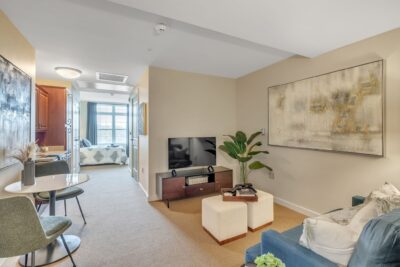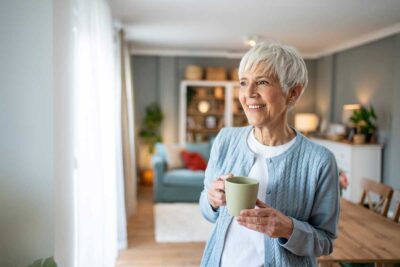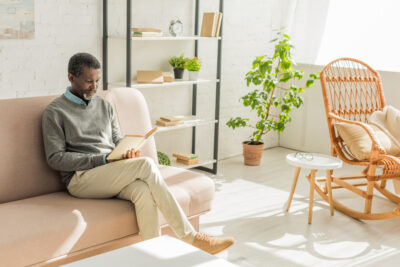The interior design professionals of Model55 understand that model apartment design goes far beyond esthetic appeal. Thoughtful choices in layout, furniture, lighting, and finishes can trigger positive psychological responses that help visitors envision themselves living in the space. From the flow of the floor plan to the textures underfoot, every design element contributes to creating environments where people can imagine relaxing after a long day, preparing meals, working from home, or entertaining friends. Today’s interior design trends increasingly balance visual appeal with genuine comfort – recognizing that beautiful spaces must also be livable.
Here, we’ll explore the essential elements that make apartments truly inviting and how these spaces can become powerful sales tools for model apartments in multi-family housing.
The Interior Design Psychology Behind Feeling at Home
The concept of “home” extends far beyond physical walls and furniture – it’s a complex psychological state deeply rooted in our emotional wellbeing. Researchers have found that our need to belong has evolutionary roots, as establishing social bonds was essential for our ancestors’ survival. This innate desire for connection shapes how we experience living spaces and why comfortable environments play such a vital role in creating that sense of belonging.
Comfort is More than Physical
While physical comfort – such as supportive furniture or functional layouts – provides the foundation, psychological comfort creates that elusive “at home” feeling. Studies show that when people feel at ease in their surroundings, stress decreases and overall well-being improves.
Design choices that incorporate natural elements (a principle known as biophilia) amplify this effect. Apartments with greenery, natural textures, or access to natural light help reduce stress, improve mood, and foster a sense of calm.
The Role of Emotional Safety in Interior Design
Our homes are often described as sanctuaries – places where people retreat to feel safe – and interior design decisions directly affect that sense of refuge. Rounded edges, soft lighting, and thoughtful color palettes, for example, can make potential customers feel welcomed and protected. Spaces that balance openness with privacy also support this feeling of safety, allowing them to feel connected without sacrificing comfort.
Designing Model Apartment Layouts That Invite Relaxation
The layout of an apartment serves as its architectural foundation, influencing how prospective residents will experience life in the space. An intentional floor plan supports both solitude and social interaction, while poorly conceived ones can create a sense of tension and frustration.
Open vs. defined layouts
Open-concept model apartments emphasize flow, natural light, and connection between living, dining, and kitchen areas. They feel bright, expansive, and social. More defined layouts, on the other hand, provide privacy, quiet, and clear separation of space – qualities many residents value when working from home or hosting guests. The ideal interior design often blends the two approaches, offering communal areas alongside private retreats.
Managing clutter and visual noise
In compact apartments, clutter can overwhelm quickly. Smart storage solutions – built-in shelving, hidden cabinets, and multi-functional furniture – help maintain calm. Minimalist color palettes, balanced textures, and careful cord management reduce visual noise, allowing future residents to feel more at ease.
Lighting and Color: Setting the Mood
Our interior designers recognize that light and color trends influence how model apartments feel more than almost any other factor.
- Soft lighting: Warm, layered lighting – from sconces, lamps, and indirect sources – creates intimacy and relaxation.
- Color psychology: Cool tones like blues and greens calm, while warm undertones in neutrals add welcoming warmth.
- Natural light: Abundant daylight improves mood, sleep, and even property values. Maximizing windows, using sheer treatments, and designing for sun exposure help apartments feel open and alive.
Textures and Materials That Feel Like Home
Beyond appearance, tactile experiences define how individuals who are touring a space feel connected to the apartment.
- Soft fabrics: Cotton, linen, and performance fabrics add everyday comfort. Velvet and wool contribute luxury and seasonal adaptability.
- Natural materials: Wood, stone, rattan, and woven details connect to nature, fostering calm and grounding.
- Layering textures: Mixing smooth and rough as well as soft and firm creates depth and warmth, preventing spaces from feeling sterile or impersonal.
Comfortable model apartments are far more than aesthetically pleasing; they’re environments that foster security and connection to a space. By blending psychology with interior design, Model55’s team creates apartments where future residents don’t just picture themselves living – they feel an immediate sense of belonging.





